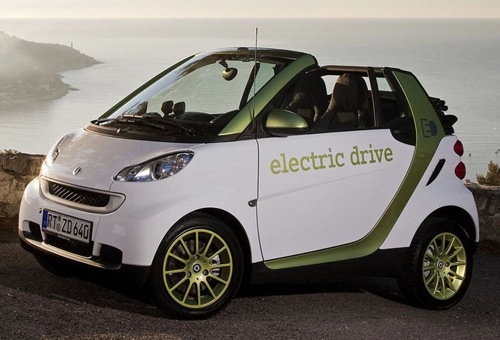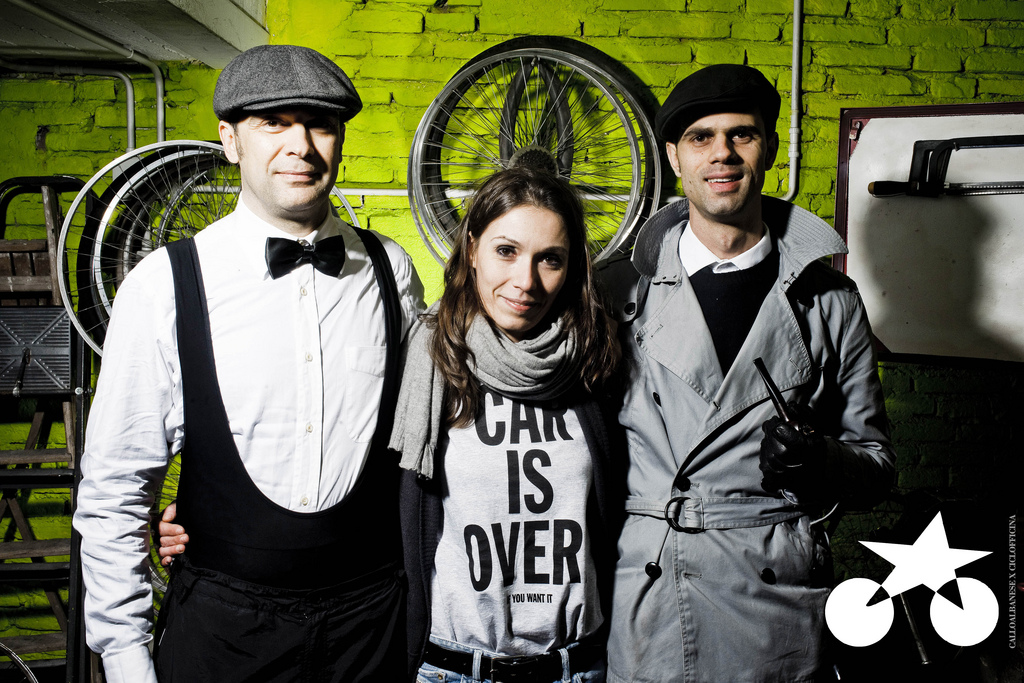There’s lots of talk about smart cities. There are two reasons for such attention.
The first one is structural: cities are our future as a species. Already, for the first time in history, over half of the world population lives in cities. Every week, 1.3 million people relocate from rural areaas to the cities of planet Earth. It’s plain common sense that we apply our best smarts to our dominant habitat. The second one is contingent: there’s money up for grabs if you hack smart cities. In Italy, the government is throwing over 600 million euro at research-and-deploy projects to “solve problems at the urban and metropolitan scale” in spaces like safety, aging, technologies for welfare, domotics, smart grids etc.
Interference between the two causes the expression “smart cities” to be interpreted in different ways. Simplifying a bit, there are two main interpretations. The dominant one (also the first one to be proposed) is associated with some large tech corporates: IBM and Cisco were the prime movers, but Google is in there too with projects like Latitude. The idea is to use networked sensors to increase the density of the flow of information that cities generate; and then move on to use this information to adapt our behavior and redesign the places we live in. “Redesign”, in this case, is an ambitious project; it aims to deploy new infrastructure (example: curbside recharging stations for electric cars), in their turns connected to more sensors. The most important sensors would live on our smartphones, that feed a non-stop stream of information about our surroundings onto large datasets. Technology and interdependence are the lynchpin of this vision. Its symbol is MIT’s Copenhagen Wheel.
The second interpretation is associated to hacker culture and the social innovation world. The idea here is to redesign cities to make them more comfortable, simple, sustainable – financially sustainable too. Sometimes this will imply introducing advanced technology (examples: microsolar and LED street lighting); others it will drive low tech solutions (examples: bicycles and urban farming). Social relationships, community building and awareness of the natural environment’s fragility are the lynchpin of this vision. Its symbol is the hackerspace. I will call cities evolving according to these two different interpretations “type 1 and -2 smart cities” respectively.

Type 1 smart cities have advanced technologies, cool design, researchers of proven excellence. Each component, taken individually, is definitely smart. And then a funny thing happens: once you piece them together you get a whole that does not look smart to me. Not at all. Take, for example, electric cars. They are silent, and don’t spew out greenhouse gases. But:
- the electricity that powers them has to be produced somehow. In a world in which hydro is at capacity, nuclear is politically dead and solar not developed (yet?), installing additional capacity means burning fossil fuels. Cars’ emission, then, are not eliminated, just moved where you can’t see them. A shift to electric cars would increase or decrease total emissions depending on the existing power stations and the grid: fossil fuels power stations typically convert to electricity only about 50% of the energy harvested from combustion (the rest becomes heat); another 5% are lost along transport. So, of 100 KW embedded in fuel, only 45 are actually available to recharge that new, shiny electric car.
- they require a costly infrastructure of recharging stations
- electric cars are still cars. They embody the idea of associating to each human being a tin box of four meters by one and a half by one, that gets driven on average one hour a day and spends the remaining twenty-three squatting precious urban space. As such, they don’t solve mobility problems. They might even make them worse, since they are allowed into restricted entry areas.
- they are a nonpermissive technology. You are not allowed to hack them, you are not allowed to charge them any way other than connecting them to the power grid. You are allowed to choose what color you want them, and how to pay for them. They relegate us to a passive role – the same we have with respect to internal combustion cars.

Now let’s look at another approach to mobility, not as innovative on first sight: congestion charges – schemes whereby drivers are charged some money to enter a city center. I had the privilege of witnessing the launch of a congestion charge scheme in Milan, Area C. Its results are impressive: 34% reduction in vehicles accessing the area (49% of high emission vehicles); 5% increase in commercial speed of public transport; 23% reduction of driving accidents (24% on injuries); 15 to 23% reductions acroo the spectrum of the main pollutants (source – Italian).
But the real advantage of Area C is that it creates space rather than occupying it. In perspective, it makes the central streets in Milan available to be a platform for social interaction, play, trade, food consumption, lifestyle innovation. Since fast and heavy (hence dangerous) vehicles are not reclaiming most of their surfaces anymore, people can attempt to do new, interesting things with city streets. They can and do explore other ways to move about – bicycles, rollerskates, running. Talented hobbyists and crafty mechanics can create new ecosystems of urban light mobility: in countries that have already undergone this transition you can see this in the sheer variety of bicycles – bicycles with trailers, or bicycles with loading surfaces for small freight. You can see children walking to school in safety, a big taboo in Italy (roads are perceived to be so dangerous that only nonconformist parents let their children walk to school: many schools go as far as to forbid it).
So, what do we mean by smart in smart city? The two approaches I tried to cover here are not clearly outlined in the current debate. And yet, it seems to me they are not only different, but mutually incompatible. Type 1 smart cities are centralized: all smarts are concentrated in the technologists in corporate and university labs, and the role of citizens is to consume their various gadgets. Type 2 ones are full of networks to purchase locally produced food, urban farming, sewing cafés, hackerspaces, fablabs. Type 1s invest huge amount of money on ultrafast mobile networks. Type 2s conjure, as from thin air, wifi city networks that ride on the back of routers already installed in cafés, public libraries and our own homes (this happened in a matter of hours during the earthquake in spring 2012). Students in Type 1 smart cities go to school with tablets. Those of Type 2s use creative commons syllabi – and probably can mix and match the lecturing of their local teachers with that of the Khan Academy or similar experiences. Smart cities of Type 1 concentrates production (agriculture, manufacturing, finance) to large companies, organized to take advantage of increasing returns to scale. Those of Type 2 distributes it, at least in part, across many small entities: permaculturists, makers, community lending agencies.
By now you will have figured out that I find decentralization much smarter an more modern. But there is a problem: almost anything that is smarter in that sense reduces GDP. If public transport works better, more people use them: traffic decreases, but so does the consumption of fuel and vehicles. If people engage more in sports and outdoor activities GDP goes down via the reduction in health care costs (health care is a gigantic business). Area C in Milan, by reducing driving accidents, is a scourge on GDP (fewer medical treatments, less rehab, less car repairs). Type 1 smart cities have no such problem: the Copenhagen Wheel costs 600 dollars and needs an onboard iPhone to work. In fact, the Guardian ended up wondering how smart it is to put over a thousand euro worth of sophisticated circuitry on a bicycle – an eminently stealable contraption.
Corporates love centralization. And so they should, because it gives them a pivotal role and lots of headroom to monetize what they do (when everything is centralized, people in the periphery have to buy everything from the center). I have no doubt that they will be the protagonists of the government’s smart cities call for projects. And still, I have a hunch that in the last few months the voices of the supporters of decentralized solutions started to be heard somewhat. Such voices come, as usual, from that most decentralized of places: the Internet.
What fascinates me in the discussion on smart cities is that it twists our arm into asking really relevant questions. What does GDP really measure? What is really this thing called growth that we are trying to drive? How do we want live with each other in our cities? Whatever the outcome (or the lack of one), I do hope we will take the time and effort to go deep into the debate. It’s not every day that we get to make collective decisions of such broad scope, forcing us to ask ourselves what we really want, how we really expect to live together. To fully rise to this challenge, I hope that the prime sensors of the new smart cities are deployed to listen to citizens (and by that I mean individuals, not just stakeholders); and that their prime enabling technologies are safe, detoxyfied, rational argument-oriented environments – located both online and offline – in which we can talk stuff through, and make, together, the relevant decisions. Even those of us who like centralized systems will surely agree that making collective decisions on our common future should stay decentralized. You see, we even have a name for decentralized public decision making: we call it democracy.
